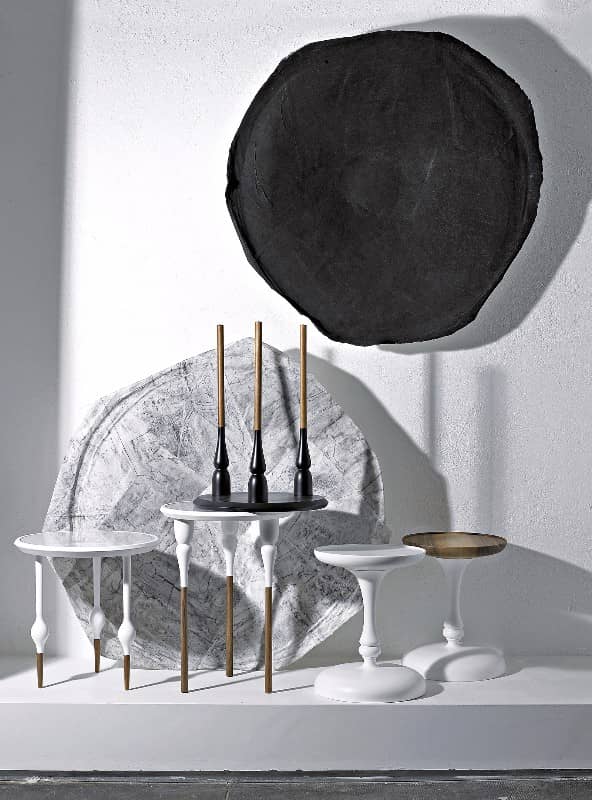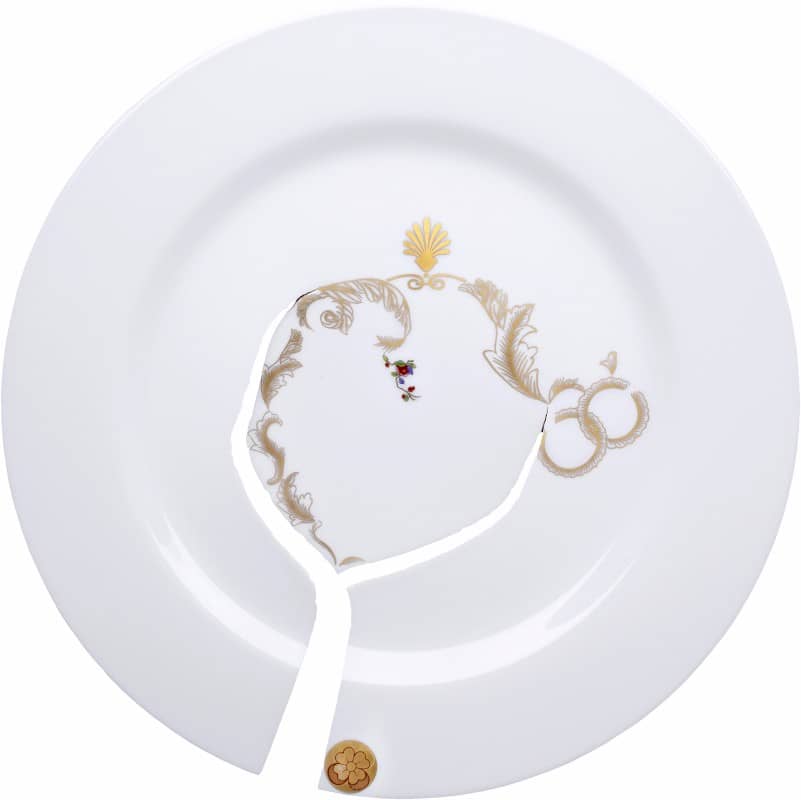
Communicating savoir-faire
Territorial culture, a passion for craftsmanship and a natural inclination for communication. French designer Sam Baron, art director of Fabrica design studio and all-round designer, tells us of his love for projects conceived with the handsIt is not easy to keep up with Sam Baron. He works in Italy, France and Portugal and is always on the move between Europe and the rest of the world, where he stages his exhibitions and takes part in all the most important design events. The 37-year-old French designer is well known in the design world because he places himself halfway between factory and workshop. So much so that in the last ten years – he started working in 1997, before finishing his studies –he designed objects for design brands such as Zanotta, Ligne Roset and Casamania and took part in special partnership projects with important manufactures, such as Sèvres and Limoges. On top of this, he works as head of the design department of Fabrica, the school/research centre founded by the Benetton group, and the personal projects that he carries out under the name Baron Edition.
Sam, you are a prolific designer as well as a very active art director, and your projects develop into installations and exhibitions with a cultural content (such as your most recent, Belvedere, held at Villa Necchi during the last Salone del Mobile). Are design and its “mise-en-scène” a valid medium for the protection and promotion of savoir-faire?
Design is a process, a practice which allows you to combine different components: creativity, technique and communication… so as an art director it is possible for me to convey a message through a collection of objects that can be focused on a particular subject or theme, depending on the occasion. I believe that when young talents can be dedicated to elaborate new visions (like the projects elaborated with the Fabrica team. Ed.) we are given a great opportunity to establish a dialogue and a contact with the public on specific issues, such as how to defend the legacy of craftsmanship.
You co-operate with different manufactures in Europe. As a designer, do you see differences in the approach and in the way of working in these places, particularly where craft skills are concerned?
Each country has its own features, which you discover and understand when you are working in close contact with these companies. A country’s culture and attitude also generates a different approach to work, which forces me, as a designer, to look for specific features when selecting partners. It is very stimulating and interesting, because you have to take into consideration elements that eventually will steer the whole project. Like my last collection for Vista Alegre, Lusitania: I designed a porcelain set in blue and white with a contemporary interpretation of the azulejos heritage, in a modern mix-and-match.
What do you think of the renewed attention towards unique pieces in design? What differences do you see with the so-called “design-art”?
When we talk about design we are referring to a discipline that is relatively young. It emerged after the Second World War and its purpose was to give people new objects and furniture. Since then, many attempts have been made to define where it stands, and the process is still under way. In its early days, design was characterised by an industrial language, then it evolved into a more conceptual phase – as occurred twenty years ago with the Dutch avant-garde of Droog Design – and on again into the “arty” phase that still seems to represent it today. I think there is room for everybody on the market, provided that briefing and intentions are clear. The problem is when things get muddled up, when the clients don’t understand how and why they should spend their money. So if you are looking for a unique dining table, why not ask a design gallery or an artist? It doesn’t make much difference if people can share a good moment enjoying food and having friends at home.

What are your favourite materials? And how have you refined the way in which you interact with those who put your ideas into practice using different techniques and processes?
I don’t have a preference for a material in particular, although when I started I worked with ceramic and porcelain on an industrial scale. Perhaps the most important aspect of my work is the “scale progress” I have made over time: I started off designing small objects, moving on to furniture and now to space. I like this evolution in my career; it is the common thread that joins everything together in a controlled, almost organic progression. I have a very close relationship with those who work with me. On top of everything I have to respect and trust them and their skills. In order to produce a good project you must feel confortable and in a team. I like to be “surprised” by people who are passionate about their work; and besides, we all want to prove that our collaboration is special and that together we can achieve a unique result.
You work a lot with young or aspiring designers: what type of relationship do new generations have with craftsmanship? Do you see interesting studies underway, and on what aspects of research do you think they should be focusing?
I think young designers are aware of, and indeed open to, artisan skills. In spite of the fact that, at the moment, it is commonly believed that to be a designer, or to make a good product, all you have to do is make a prototype. I think it is important not to forget that we need craftsmen and that craftsmen need us. And craftsmen have to pay a price in order to exist: that is why they have to sell their products, so they can continue to survive. Quite often the strategy pursued is limited to displaying the work of artisans in exhibitions, when in actual fact we should ask ourselves, as designers, how we can help them achieve a greater commercial substance, with a view to the future.
What do you think of the whole phenomenon of the “makers” (self-made design achieved in particular with digital printers and robotics that has given rise to a “technological craftsmanship” around which many start-ups are being established. Ed.)? What future do you see for this approach to design, considering that it is probably an evolution of artisan production?
Are we talking about a new fashion because we have put a name to something that, in fact, has existed for a long time? Or is it that we are really enjoying the fact that we are making something with our own hands because the world has turned into a fake reality? I think that a reflection on the maker culture is in itself positive, because it involves considering potential scenarios of change and approaches, and in this sense the question is about the way we live; but at the same time I believe that a craftsman knows exactly what “to make” means. Designers, on the other hand, should only be concerned about thinking and designing!


